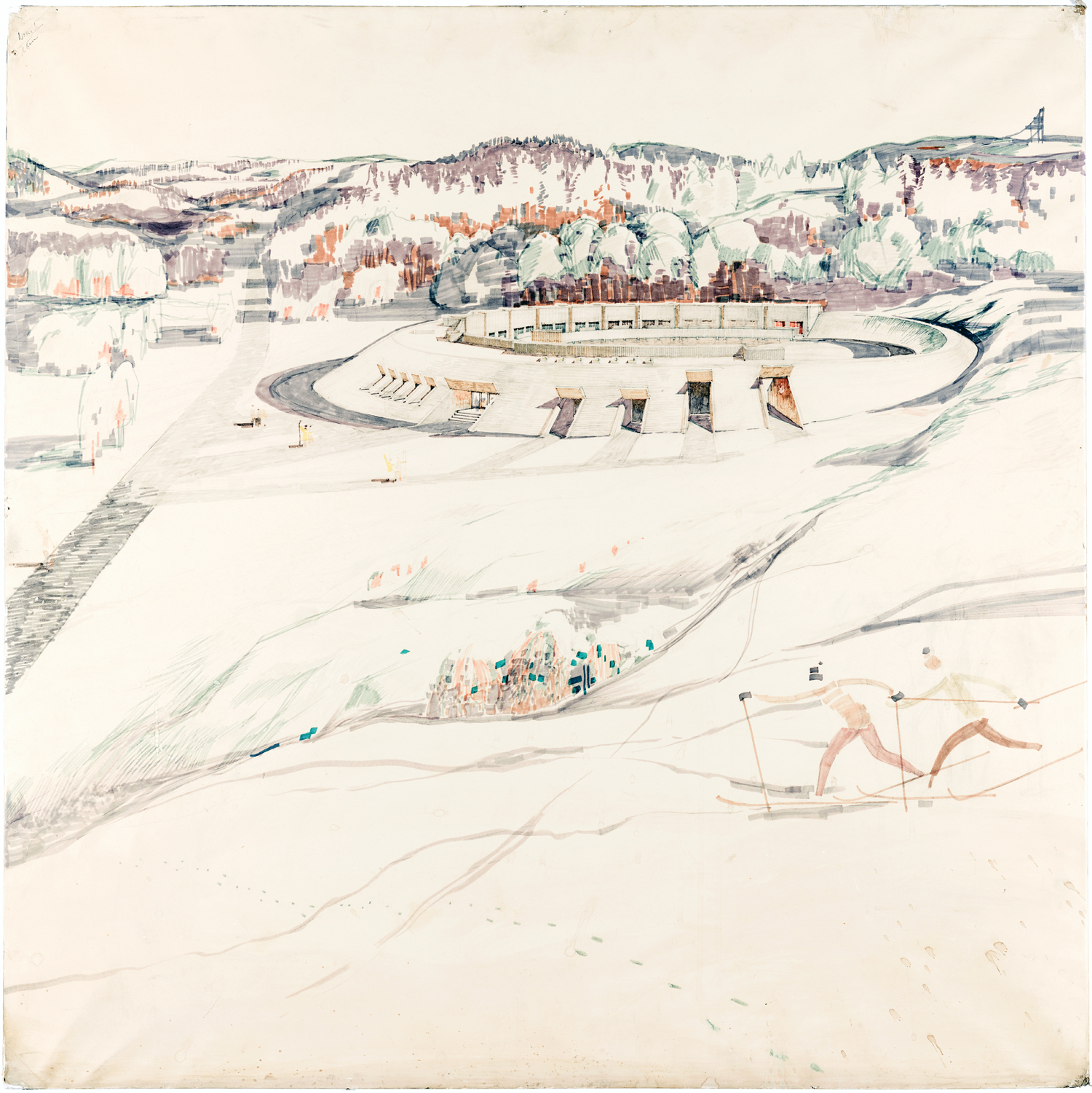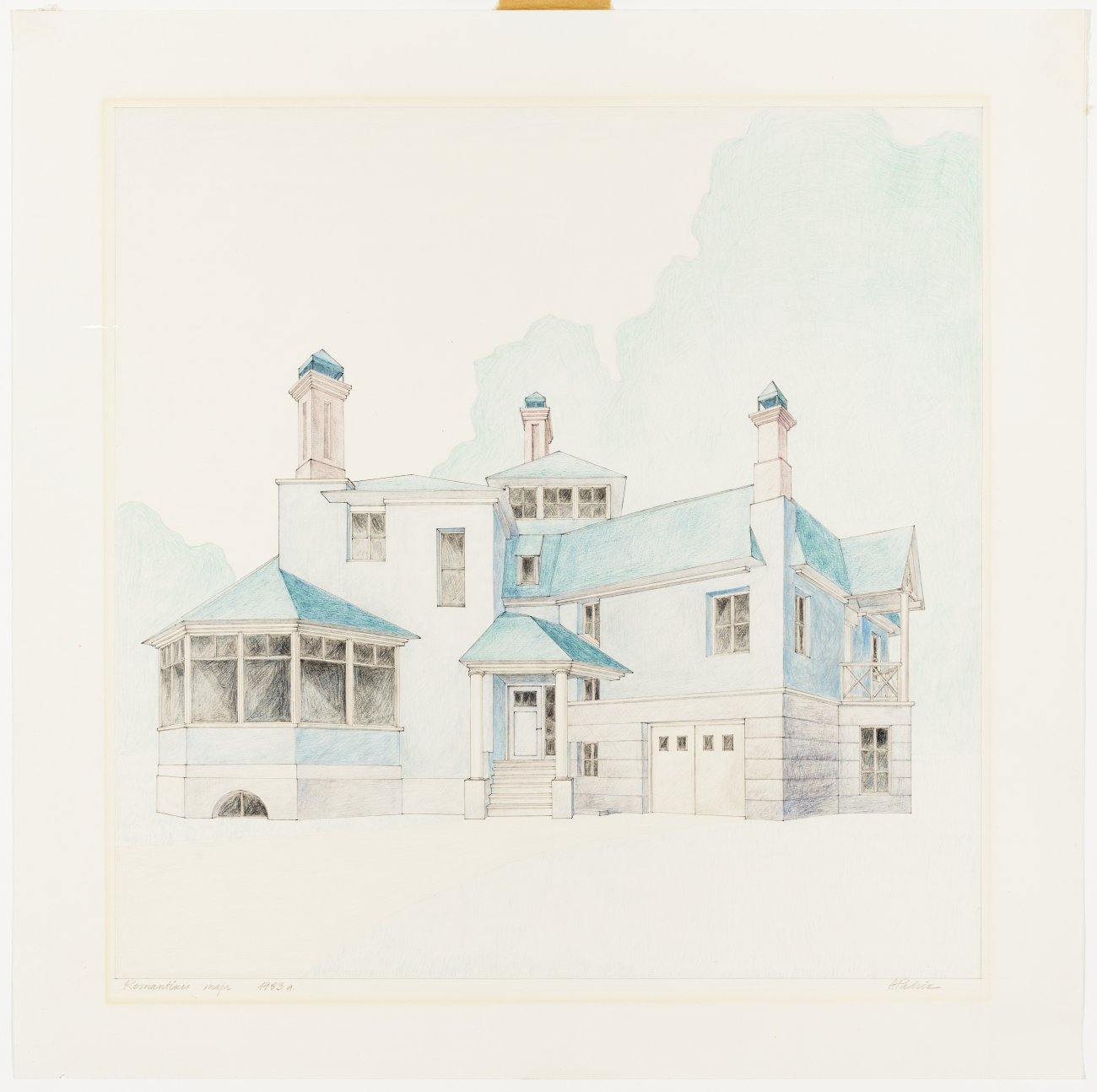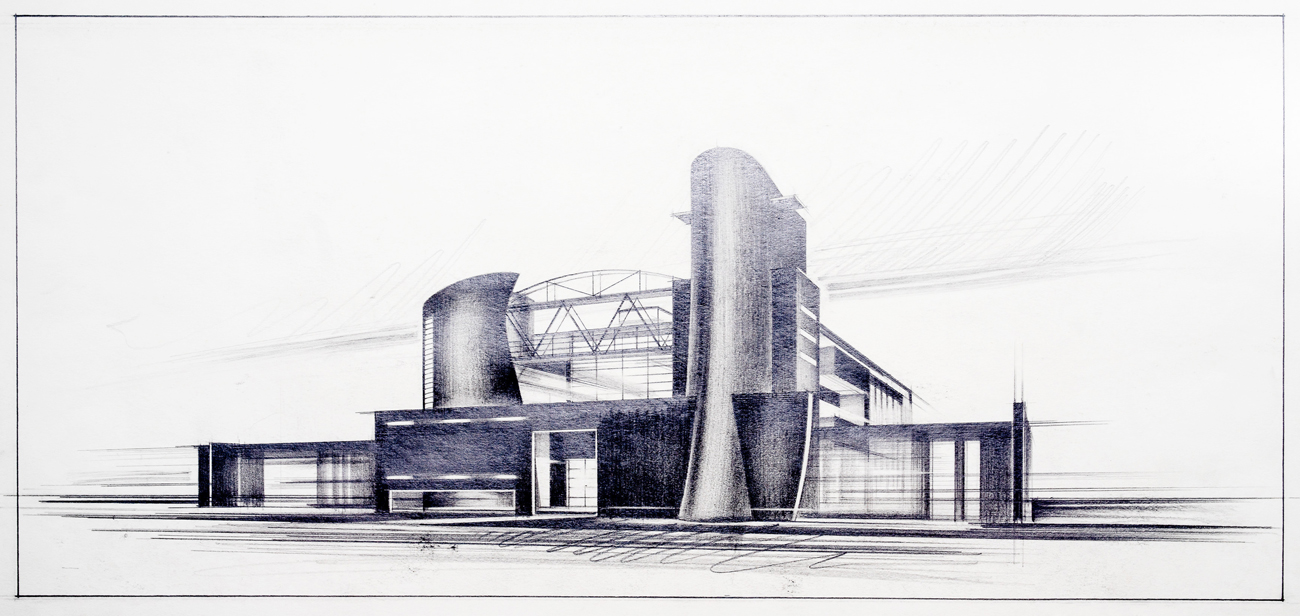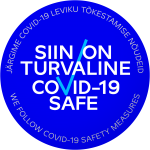Tag Archives: perspective drawing
Tehvandi Ski Centre

Peep Jänes, Tõnu Mellik, Allan Murdmaa (drawing), 1974. MEA 4.6.2
This modern ski centre was built in southern Estonia by commission of the State Committee for Sports of the USSR, and was intended foremost for training Soviet winter athletes. Its location in Tehvandi, on the fringes of Otepää (Estonia’s “winter capital”), was a proper choice, offering a wealth of athletic opportunities amid a landscape of rolling hills. The architects’ vision of a modern centre embedded in an artificial hill, sketched here in perspective, was realised to almost exact detail. Architects’ manner of approaching their task was location-based. Copying Otepää’s hilly landscape, they nestled another spherical form into nature. The Space Race also had a certain influence on the structure’s relatively technical form. The Union of Estonian Architects gave the watercolour to the museum in 1993. Text: Sandra Mälk
Veel: 1970s, architect: Allan Murdmaa, architect: Peep Jänes, architect: Tõnu Mellik, landscape architecture, perspective drawing
House for a Romantic – House for a Physicist

Ain Padrik, 1983, 1984. MEA 55.1.3 ja 55.1.4
At the end of the 1970s and the beginning of the 1980s, architecture and especially residential building was starting to look at historical examples, and a relationship with the client or with the location of the building was deemed to be important. Designing a house provided a chance to experiment with the limits of freedom of expression and set an intriguing assignment to interpret the client through architecture. The romantic’s house followed the example of the Arts and Crafts movement in 19th-century England. This movement cherished handicraft and often employed motifs from medieval architecture: romantic towers and complex roof landscapes. The physicist’s house with its more clearly defined volumes proceeds from the wishes of the client. The physicist did not ask for large windows, preferring a lot of wall space and dimly lit interior. A thorough working project was also finished in addition to this sensitive perspective view. Construction received a building permit, but the physicist’s house was never completed.Ain Padrik donated the drawings to the museum in 2016. Text: Sandra Mälk
Veel: 1980s, architect: Ain Padrik, perspective drawing
Computation Centre in Pärnu

Urmas Muru, competition in 1988, II prize. MEA 5.5.3
In the 1980s young architects Raoul Kurvits, Peeter Pere, and Urmas Muru formed the radical Rühm T (Group T) artists’ group, which proclaimed that architects are artists, also. Urmas Muru’s vision for the Pärnu Computation Centre was a graphical Neo-expressionist design that was characteristic of Rühm T’s works. The strong angle of perspective and black-and-white pencil tones proceed from buildings of technical function and appearance. This led to a unique style that Kurvits and Muru termed “technodelic expressionism”. They described ‘technodelics’ as a revelation of the technical world through trance. The museum acquired the drawing in 1993 from Urmas Muru.
Veel: 1980s, architect: Urmas Muru, perspective drawing





